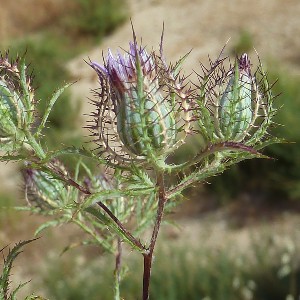Anti-inflammatory, antibacterial and antioxidant activities of the medicinal species Atractylis cancellata

Accepted: April 14, 2023
All claims expressed in this article are solely those of the authors and do not necessarily represent those of their affiliated organizations, or those of the publisher, the editors and the reviewers. Any product that may be evaluated in this article or claim that may be made by its manufacturer is not guaranteed or endorsed by the publisher.
Authors
This research is focused on the estimation of total bioactive contents and the evaluation of in vitro pharmacological activities of crude extracts (petroleum ether, ethyl acetate and n-butanol) obtained from the species Atractylis cancellata. The antioxidant activity was assessed by three different techniques. The antibacterial activity was determined using the agar disk diffusion assay against five bacterial strains. Furthermore, the anti-inflammatory activity was evaluated by the ovalbumin method. According to the results, A. cancellata extracts are rich in several classes of secondary metabolites, especially steroids, triterpenoids, flavonoids, and alkaloids. In addition, the tested extracts showed very interesting antioxidant activities in DPPH (2,2-Diphenyl-1-picrylhydrazyl) and FRAP assays and important correlation coefficients between the results of antioxidant activities and total phenolic and flavonoid contents were found. Moreover, all the tested extracts displayed an antibacterial effect at least against three bacterial strains. The petroleum ether extract inhibited the growth of all the tested bacteria in a dose-dependent manner except Escherichia coli ATCC 25922 and it revealed a strong anti-inflammatory activity (81.77±0.05%). We conclude that A. cancellata could be an important source of natural pharmacological candidates against oxidative stress, inflammatory and microbial diseases.
How to Cite

This work is licensed under a Creative Commons Attribution-NonCommercial 4.0 International License.
PAGEPress has chosen to apply the Creative Commons Attribution NonCommercial 4.0 International License (CC BY-NC 4.0) to all manuscripts to be published.

 https://doi.org/10.4081/jbr.2023.11096
https://doi.org/10.4081/jbr.2023.11096



